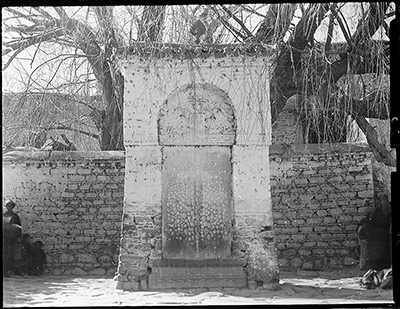
1998.286.21.2 (Glass negative)


1998.286.21.2 (Glass negative)

Sir Charles Bell or Rabden Lepcha?
Sir Charles Bell
1920-1921
Lhasa > Jokhang > Smallpox Doring
1998.286.21.2
78 x 103
Administration
Negative Quarter Plate
Donated 1983
St Antony's College, Oxford
Varnish Intensifier Notches on right side
Sir Charles Bell's Mission to Lhasa 1920-21
Q.20
BL.Q.20b
British Library, Oriental and India Office Collections
Manual Catalogues - Bell's List of Illustrations entry: "[No. of chapter] IV. [Subject of Chapter] History up to 1900 [Subject of Illustration] Q.20 (h). Smallpox edict near Tsuk La-Kang, in winter, containing instructions for segregation during smallpox epidemics. [Remarks] L.25"
Other Information - Related Images: Bell does not distinguish in his List of Illustrations between 1998.286.21.1, 1998.286.21.2 and 1998.286.291 and all three may be referenced by his caption for Q.20 [MS 4/8/2004]
Other Information - Setting: Bell's diary for 30th July 1921:" Per Tsendron "The weeping willow trees are called 'Chinese willows' ( Gya chang ). Since the 5th D[alai] L[ama]'s death all the trees and flowers have drooped a little. The Cho U-tra over the Small Pox Edict in Lhasa, is a Chinese willow." [diary Vol. XI, p.65]
For Citation use:
The Tibet Album.
"Smallpox edict pillar, Jokhang"
05 Dec. 2006. The Pitt Rivers Museum.
<http://tibet.prm.ox.ac.uk/photo_1998.286.21.2.html>.
For more information about photographic usage or to order prints, please visit the The Pitt Rivers Museum.
© The Pitt Rivers Museum